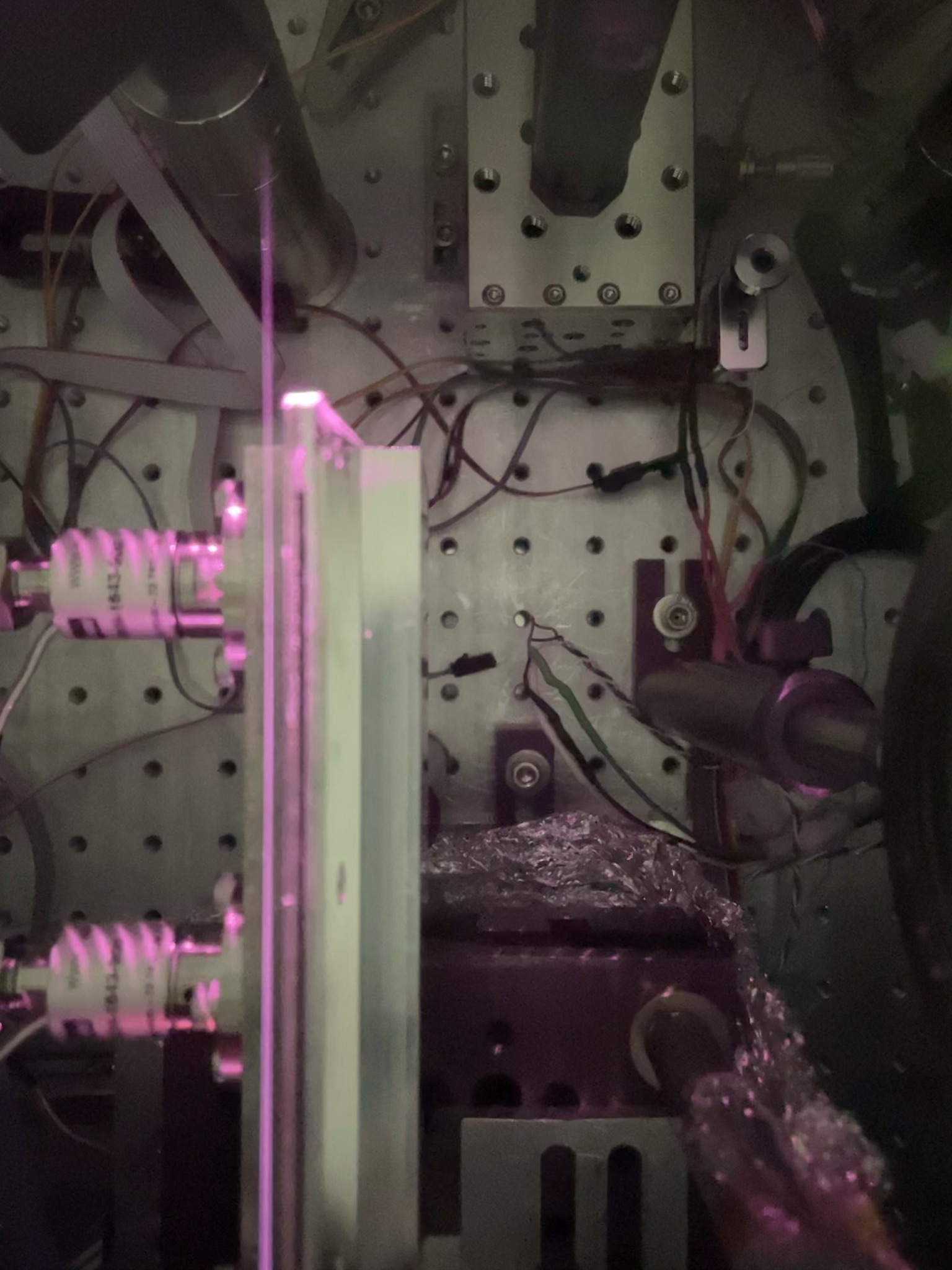News Story
Professor Howard Milchberg and group members Linus Feder, Bo Miao, Jaron Shrock, and Andrew Goffin author new publication "Self- waveguiding of relativistic laser pulses in neutral gas channels"

In many applications of the interaction of high intensity lasers with matter, it is desirable to keep the laser intensity very high over a long distance. Unfortunately, laser beams naturally spread. At low intensity this problem is solved using glass optical fibres to confine the laser light, but high laser intensity would destroy such fibres. Over the years, plasma waveguides –optical fibres made of plasma--have been a key solution to this challenge, as they are virtually indestructible. However, for applications such as laser acceleration, the plasma density needs to be very low and the waveguides must be very long, and these combined requirements have made low loss waveguide generation extremely challenging.
Our paper presents a solution to this problem involving distinct and surprising physics. It turns out that if one prepares a low density gas target with a neutral gas density depression on axis, an injected high intensity pulse will “self-waveguide” for very long distances along the depression. It does this by generating its own plasma guiding structure as it propagates: the very early front of the pulse flash ionizes the neutral gas to form the waveguide structure, which then traps and confines the rest of the pulse.
The effect strongly improves with increasing laser intensity, as our experiments and simulations demonstrate for near-relativistic pulses, and the method may turn out to be an important part of many applications, including laser acceleration of relativistic charged particles.
Summary provided by Prof Howard Milchberg
DOI: 10.1103/PhysRevResearch.2.043173
Published December 4, 2020









